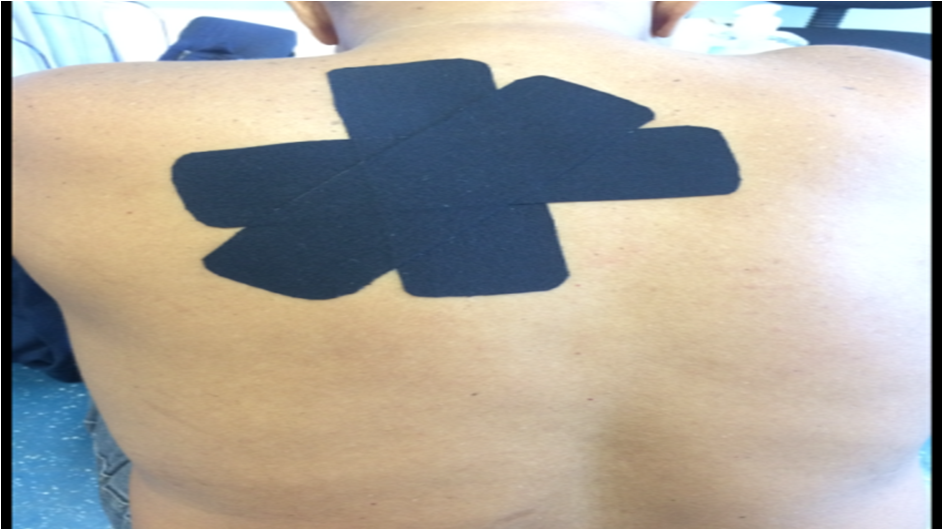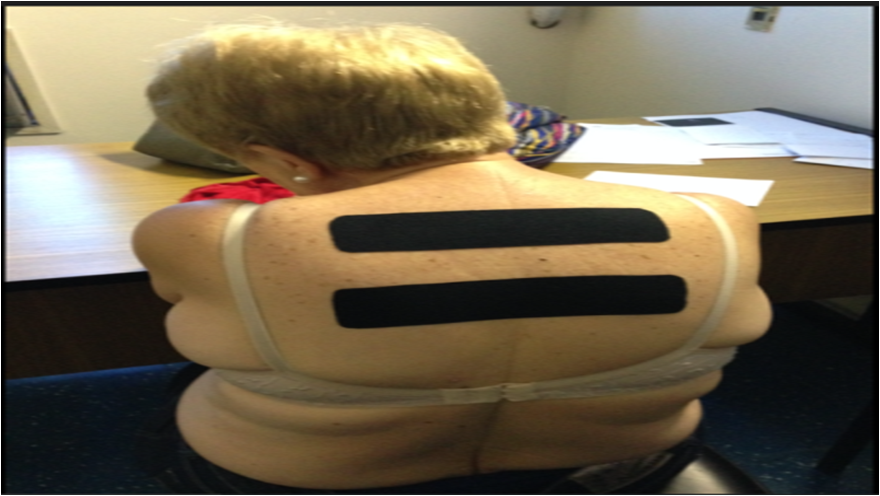Session Information
Date: Tuesday, September 24, 2019
Session Title: Dystonia
Session Time: 1:45pm-3:15pm
Location: Les Muses Terrace, Level 3
Objective: To test the efficacy of kinesio taping treatment as an adjunct therapy to botulinum toxin in the treatment of cervical dystonia.
Background: Botulinum toxin type A (TB-A) has been used as a useful drug to treat involuntary movements, specially with focal dystonias. Where it is the first choice therapy. Allied health therapies can potentiate and improve patient care. The kinesio taping therapy was developed by Kenzo Kase in Japan in 1973. The tape can be used for correction of muscle function by strengthening weak muscles; to provide skin stimulus that facilitates or limits movement; to aid in reducing edema by directing exudates towards the lymphatic duct and lymph nodes; to correct joint positioning by attenuating muscle spasms; and to reduce pain through neural pathways.
Method: Patients with idiopathic cervical dystonia treated with TB-A regularly were selected and were divided in two groups: Therapeutic group (TG) and Sham group (SG). The patients in the TG received the kinesio taping treatment obeying the standards required by the technique and according to the biomechanical evaluation of activated muscles. The SG received random kinesio taping therapy without the use of the indicated tape tensions and appropriate muscle directions. The treatment with tapes lasted throughout the period of action of TB-A, being applied once a week. It was used four scales to evaluate the patients: Toronto Western Spasmodic Torticollis Rating Scale; Craniocervical Dystonia Questionnaire (CDQ-24); Brazilian version of the Quality of Life Questionnaire(SF-36); Visual Analog Pain Scale(VAS).
Results: Eleven patients remained throughout the treatment ( 7 in the TG and 4 in the SG). The mean length of stay with the tape was 3 days. All TG patients reported pain in the evaluations, but while the tape was present they described pain relief and improved muscle support at their daily life activities. On the other hand, All SG patients reported feeling no difference from the time the tape was applied until the time of weekly evaluation.
Conclusion: Based on the data, it can be seen that the KinesioTaping treatment can be an effective adjunct in the treatment of cervical dystonia, when applied according to the technique, with TB-A.
References: [1] ARTIOLI, Derrick; BERTOLINI, Gladson. KinesioTaping: Application and its results on pain: systematic review. Fisioter. 2014 [2] CAMARGO C, Teive H, Becker N, Munhoz R, Werneck L. Botulinum toxin type A and cervical dystonia A seven-year follow-up. ArqNeuropsiquiatr 2011; 69(5):745-750 [3] SILVA, Delson José; FEN, Chien Hsin, DELLA COLETTA, Marcus Vinicius. Movement Disorders Diagnosis and Treatment 2 ed. Editora e Eventos Omnifarma. São Paulo, 2016
To cite this abstract in AMA style:
J. Magalhães, A. Rosso, F. Rezende. The effect of Kinesio Taping therapy on Cervical Dystonia [abstract]. Mov Disord. 2019; 34 (suppl 2). https://www.mdsabstracts.org/abstract/the-effect-of-kinesio-taping-therapy-on-cervical-dystonia/. Accessed December 31, 2025.« Back to 2019 International Congress
MDS Abstracts - https://www.mdsabstracts.org/abstract/the-effect-of-kinesio-taping-therapy-on-cervical-dystonia/


